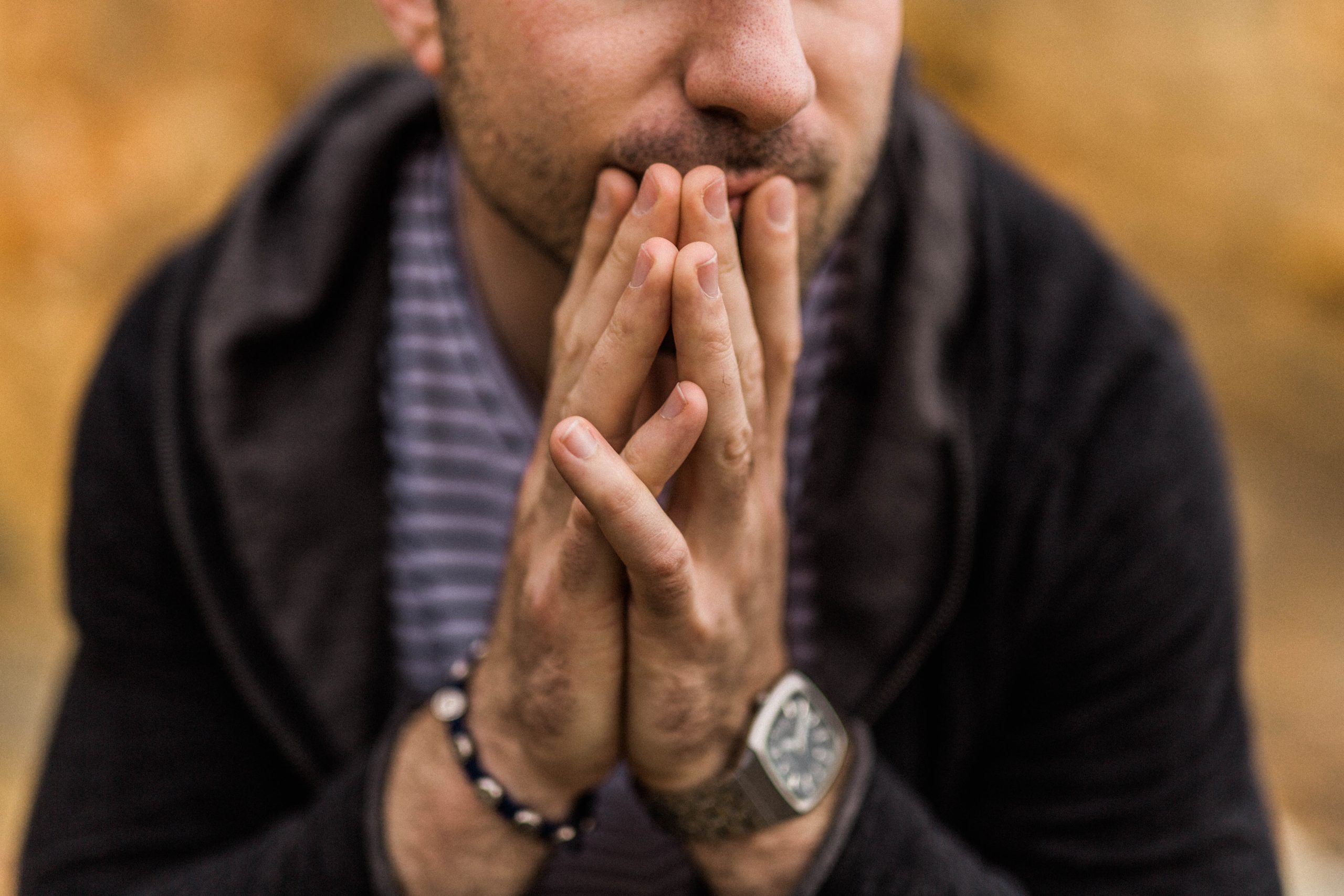What Does Depression Actually Feel Like?

Depression is a complex and misunderstood mental health condition affecting millions of people worldwide, and the trend is only worsening. While many individuals occasionally experience sadness or low moods, depression goes beyond temporary emotions. It is a serious condition that can profoundly impact both physical and mental well-being.
In this article, we will explore the depths of depression, shedding light on its various manifestations, symptoms, and the different ways it can present itself among different people. By understanding what depression feels like, we can foster empathy, support those in need, and promote mental health awareness.
What Is Depression?
Depression is a mental health disorder that is classified as a mood disorder. This means that it predominantly impacts a person’s emotions. It often causes persistent sadness, but this can vary from person to person.
The cause of depression is multifactorial and is often due to a combination of the environment and genetics. Research has shown that first-degree relatives of individuals with depression are three times more likely to develop the condition than those with an unaffected relative. This indicates that some people may be genetically predisposed to developing the condition.
On the other hand, environmental factors such as exposure to physical or emotional abuse, neglect, or violence in childhood can lead to childhood trauma, which research has also linked to higher rates of depression in adulthood. The combination of these factors can lead to depression, which can begin at any stage of a person’s life.
Different Types of Depression
Depression encompasses a spectrum of experiences, and different types of depression can exhibit varying symptoms and severity. The different types of depression can also be triggered by events in a person’s life, for example, seasonal changes, the birth of a child, or a medical condition.
According to the American Psychiatric Association’s Diagnostic Statistical Manual of Mental Disorders, Fifth Edition (DSM-5), an instrument mental health professionals use to diagnose mental health disorders, depressive disorders are classified into five distinct categories with varying criteria. These classifications include:
- Disruptive mood dysregulation disorder is often seen in children and adolescents with recurrent anger outbursts and irritability out of proportion to the inciting incident.
- Major depressive disorder (MDD) is when a person has more than five of the following symptoms for greater than two weeks. Symptoms include persistently low or depressed mood, guilt or worthlessness, anhedonia or decreased interest in pleasurable activities, lack of energy, diminished concentration, appetite alterations, psychomotor retardation or agitation, sleep disturbances, or suicidal thoughts. One of the symptoms must be a depressed mood or inability to feel pleasure that causes social or occupational impairment.
- Persistent depressive disorder (dysthymia) is a persistently depressed mood that is not severe enough to meet the diagnostic criteria for MDD. In adults, the depressed mood must last longer than two years, and in children, longer than one.
- Premenstrual dysphoric disorder is anxiety, irritability, depression, and emotional lability that occurs the week before a woman’s period. The symptoms resolve after the onset of menstruation.
- Depressive disorder due to another medical condition is a pronounced persistent period of depressed mood or decreased interest or pleasure in activities they once enjoyed, which is related to the direct physiological effects of another medical condition.
What Does Depression Feel Like?
It’s often hard for individuals that have never experienced depression to understand what their loved one, friend, or acquaintance is truly going through. Of course, the symptoms of depression are varied, but it is important to empathize nonetheless.
Depression manifests differently in everyone, making it a deeply personal experience. While no two people may have the same encounter with depression, it is crucial to acknowledge and understand how it can be perceived. This also means it can sometimes be hard to identify depression in ourselves if we aren’t looking.
Depression affects various aspects of a person’s life, including thoughts, feelings, and behaviors. It can make even the simplest tasks feel overwhelming and disrupt essential areas such as work, relationships, and self-care. It is important to note that occasionally experiencing some of these symptoms does not necessarily indicate depression. However, a combination of several symptoms across different categories may warrant further evaluation.
Feelings of Depression
Depression often gives rise to a range of distressing emotions that can be overwhelming for those experiencing them.
For some people, it can feel like being trapped in a deep hole; others might describe it as not wanting to do the things they once loved. Some may say they feel like there’s a weight on their chest or are slowed down or walking through sludge.
So, what’s the truth? Well, depression can be all these things for different people. That is why it is crucial to be aware of the many manifestations of depression so that if it touches you or a loved one, you will be armed with the knowledge to get the help you need.
According to the NIMH, some of the most common feelings of depression include:
- Relentless sad, anxious, or “empty” mood
- Feelings of pessimism or hopelessness
- Feelings of frustration, irritability, or restlessness
- Feelings of worthlessness, guilt, or helplessness
Not everyone who is depressed experiences all these feelings. Some people experience only a few, while others experience many.
Thoughts Shaped by Depression
In addition to affecting emotions, depression can alter an individual’s thoughts and perception of themselves and the world around them. Some common thoughts associated with depression may include:
- “I’m a failure”
- “It’s my fault”
- “Nothing will ever get better”
- “I’m worthless”
- “Nobody cares about me”
- “I’d be better off dead”
These distorted thoughts reflect the negative self-perception and hopelessness that often accompany depression. Thinking or talking about death or suicide is a significant warning sign of depression and should not be taken lightly. It is essential to reach out to your healthcare provider right away if these thoughts become pervasive.
Physical Problems
Depression not only affects emotional well-being but can also have a significant impact on physical health. The mind and body are intricately connected, and disruptions in one domain can reverberate to the other. People with depression may have their symptoms manifest in a more sensory way. This may include physical symptoms, such as:
- Changes in appetite and unintended weight changes
- Feeling hungry all the time, or not hungry at all
- Sleep disturbances, like increased need for sleep, early morning awakening, or inability to sleep
- Fatigue, or feeling tired all the time
- Headaches or muscle pain
- Digestive issues, such as stomach aches, constipation, or diarrhea
These physical problems can further exacerbate the overall burden of depression, making it crucial to address both the emotional and physical aspects of this condition.
Changes in Behavior
Depression can also impact your mood so much that it alters your normal behavior. This can look like isolating yourself from your family and friends and not engaging in the activities you used to enjoy, like going out to eat or playing with your children, and avoiding responsibilities of work or family, like not wanting to cook dinner for your family or engage with your spouse. It can also show up as a decrease in sexual desire and performance.
Differences Between Genders
Depression does not discriminate based on gender, but it is common for depression to feel different for men and women, especially in how men and women express the symptoms of depression and the behaviors they use to cope.
Depression may manifest as displaying emotions other than sadness. For example, research has shown that men suffering from depression are likelier to seem angry or irritable, rather than the traditional picture of depression, which is sad and crying. Additionally, the increased use of alcohol or drugs as a coping strategy for dealing with depression is common, particularly in men.
Rates of diagnosis of depression are also much higher in women than men. This has led to some debate about whether diagnosis rates are lower in men due to the reduced recognition of these behaviors as symptoms of depression. This is why it is crucial to understand how depression can manifest for men and women to promote access to treatment for everyone.
When To Get Help
If you or someone you know is experiencing symptoms of depression, it is essential to take these feelings seriously and seek support. Depression is a treatable condition, and effective treatments are available. Treatments include medications, psychotherapy, support groups, lifestyle modifications, and alternative options such as yoga or breathwork. There are various avenues for individuals to embark on their journey to recovery and the right path for everyone.
Early intervention can significantly impact the course of depression and improve outcomes, so it is crucial to be aware of the signs and symptoms of depression to start recovery.
In Summary
Depression is a complex and multifaceted mental health condition affecting millions worldwide. By delving into the depths of what depression feels like from a patient’s perspective, we can gain insight into the emotional, physical, and behavioral challenges it presents. It is crucial to recognize that each of us will have a unique experience with depression and the differences in how depression can manifest. Through increased awareness, early intervention, and support around us, we can help those grappling with depression find hope, healing, and a path to recovery. Remember, seeking support is a sign of strength; no one should face depression alone.
Related Topics:
- Gallup Poll Shows Depression at Record Highs
- Depression Quizzes – Do They Work?
- Can Someone Have Functional Depression?
References:
- Addis, M. E. (2008). Gender and Depression in Men. Clinical Psychology: Science and Practice, 15(3), 153–168. https://doi.org/10.1111/j.1468-2850.2008.00125.x
- Bains, N., & Abdijadid, S. (2022). Major Depressive Disorder. PubMed; StatPearls Publishing. https://www.ncbi.nlm.nih.gov/books/NBK559078/
- Chand, S., & Arif, H. (2022, July 18). Depression. PubMed; StatPearls Publishing. https://www.ncbi.nlm.nih.gov/books/NBK430847/
- Choi, N. G., & DiNitto, D. M. (2010). Heavy/binge drinking and depressive symptoms in older adults: gender differences. International Journal of Geriatric Psychiatry, 26(8), 860–868. https://doi.org/10.1002/gps.2616
- Ciccarelli, S. K., & Noland, J. (2013). Psychology : DSM 5 (5th ed.). Pearson.
- Genuchi, M. (2015). Anger and Hostility as Primary Externalizing Features of Depression in College Men. ScholarWorks. https://scholarworks.boisestate.edu/psych_facpubs/221/
- Macdonald, J. A., Greenwood, C. J., Francis, L. M., Harrison, T. R., Graeme, L. G., Youssef, G. J., Di Manno, L., Skouteris, H., Fletcher, R., Knight, T., Williams, J., Milgrom, J., & Olsson, C. A. (2020). Profiles of Depressive Symptoms and Anger in Men: Associations With Postpartum Family Functioning. Frontiers in Psychiatry, 11. https://doi.org/10.3389/fpsyt.2020.578114
- Mandelli, L., Petrelli, C., & Serretti, A. (2015). The role of specific early trauma in adult depression: A meta-analysis of published literature. Childhood trauma and adult depression. European Psychiatry, 30(6), 665–680. https://doi.org/10.1016/j.eurpsy.2015.04.007
- Seedat, S., Scott, K. M., Angermeyer, M. C., Berglund, P., Bromet, E. J., Brugha, T. S., Demyttenaere, K., de Girolamo, G., Haro, J. M., Jin, R., Karam, E. G., Kovess-Masfety, V., Levinson, D., Medina Mora, M. E., Ono, Y., Ormel, J., Pennell, B.-E., Posada-Villa, J., Sampson, N. A., & Williams, D. (2009). Cross-National Associations Between Gender and Mental Disorders in the World Health Organization World Mental Health Surveys. Archives of General Psychiatry, 66(7), 785. https://doi.org/10.1001/archgenpsychiatry.2009.36
- Sekhon, S., & Gupta, V. (2022). Mood Disorder. PubMed; StatPearls Publishing. https://pubmed.ncbi.nlm.nih.gov/32644337/
- Weissman, M. M., Wickramaratne, P., Nomura, Y., Warner, V., Verdeli, H., Pilowsky, D. J., Grillon, C., & Bruder, G. (2005). Families at High and Low Risk for Depression. Archives of General Psychiatry, 62(1), 29. https://doi.org/10.1001/archpsyc.62.1.29



